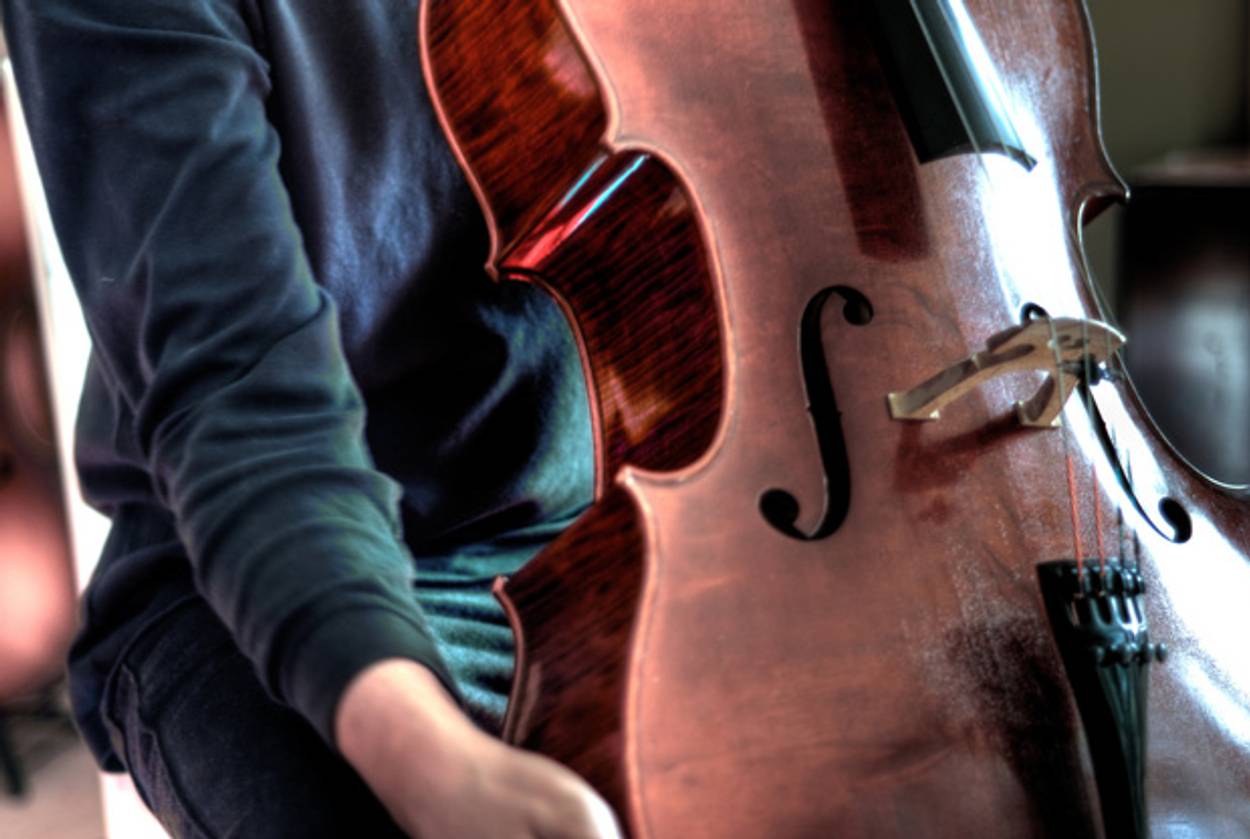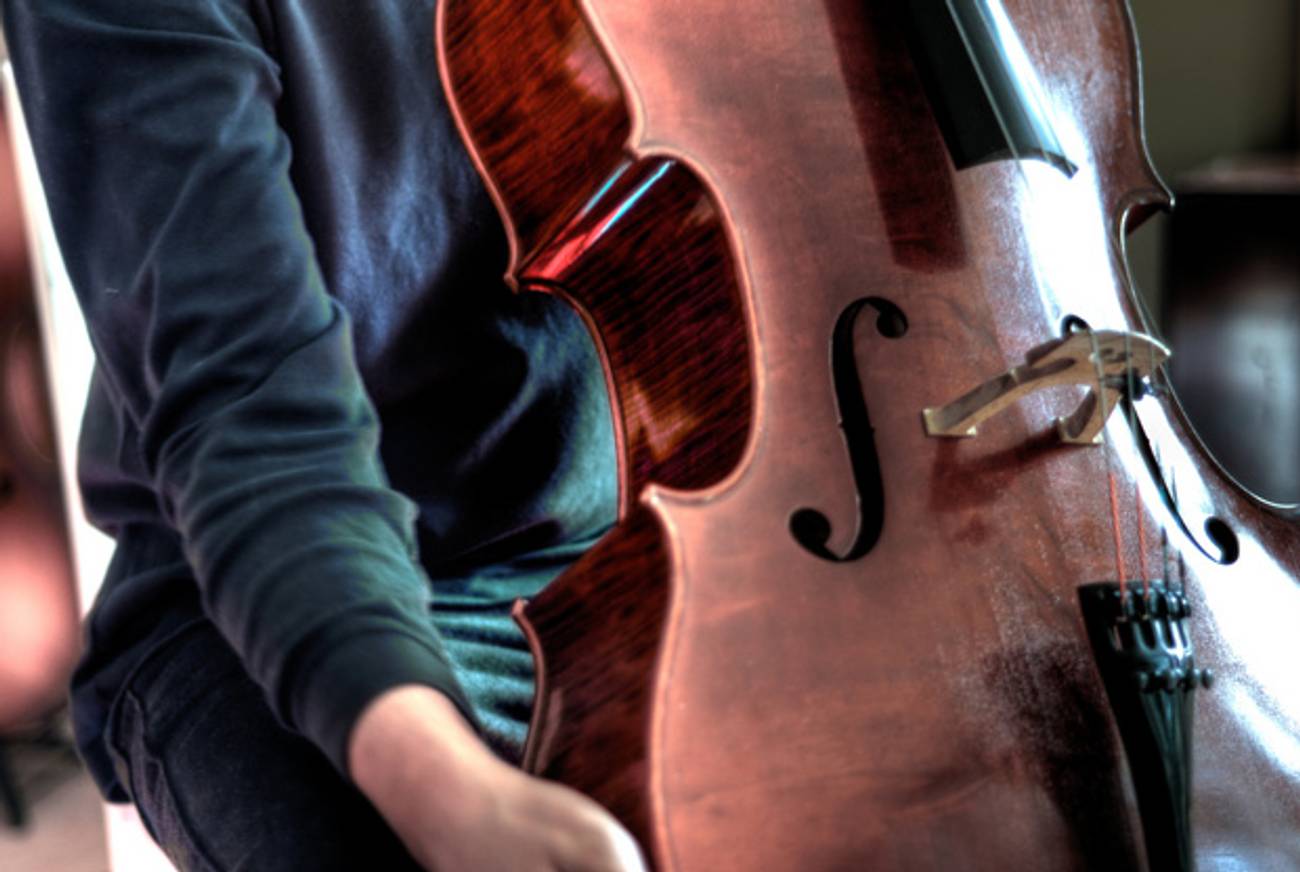String Theory
The cello is the most evocatively Jewish instrument. A new album, Sacred Time, features its rich sound in classical, liturgical, and Hasidic melodies




When classical composers wanted to bring alive the music of the Jews, they often turned to the cello, the instrument that most approximates the range, tone, and texture of the male voice. After all, Jewish music was the voice of men—men went to shul, men prayed and women’s voices even outside the synagogue were often stifled.
The most famous example of this use of the cello comes in Max Bruch’s “Kol Nidrei,” in which the cello develops the atonement theme sung by the cantor at the beginning of Yom Kippur. And the cello is central to other compositions, like Maurice Ravel’s “Deux Melodies Hebraique” and Ernest Bloch’s “From Jewish Life.” The music reflects not only the somber nature of the Jewish life that these composers saw, but also the essential masculinity of Jewish music of the time.
The male sounds of the synagogue—both the voice of the cantor and the hubbub of men at prayer—have been so essential to my own life that when I decided as an adult to learn a classical string instrument, I was drawn to the cello. In fact, I found my cello teacher in a synagogue. His name is Noah Hoffeld, and, when we met 10 years ago, he was playing the cello to accompany Friday night services at Congregation B’nai Jeshurun on the Upper West Side of Manhattan.
Earlier this month, Hoffeld and his friend Lee Feldman released a CD called Sacred Time: Jewish Music for Cello and Piano, a collection that includes selections from the classical cello repertoire, Jewish liturgy, and Hasidic tunes. Of course, it is impossible to be objective about the work of one’s teacher, but listening to this album transported me at various times to the concert hall, the synagogue, and the Sabbath table of a Hasidic master. Among the Hasidic songs is “Healing Niggun,” by the late Rabbi Shlomo Carlebach, the Jewish folksinger who helped revive Jewish music in the years after the Holocaust. Having grown up on Carlebach’s music, I am accustomed to hearing his songs sung, not orchestrated. But this album does Carlebach more than justice. The cello gives his melody a particularly human voice. Too much orchestral Jewish music sounds schmaltzy, but here the music is filled with expressiveness and warmth.
Both Hoffeld and Feldman were brought up in largely secular Jewish families in New York. Neither of them was sent to Jewish school, not even after-school Talmud Torah. Feldman did not have a bar mitzvah, and Hoffeld was not going to have one but convinced his parents to let him after he saw his friends going through the process. Hoffeld, now 40, is a graduate of Juilliard, where he was classically trained, but over the years he has gravitated toward Jewish music. For several years he played with the band Pharaoh’s Daughter, a gig that led him to the spot at B’nai Jeshurun. Feldman, in his early 50s, was trained in composition and piano at Indiana University.
A few years ago the two musicians were living in the Williamsburg section of Brooklyn, and, quite separately, found their way to the Chabad of North Brooklyn, an outreach center of the Hasidic sect. Both came under the influence of the spiritual leader of the synagogue, Rabbi Shmuly Lein; Feldman studied Torah cantillation with him, and Hoffeld studied Hasidic thought and mysticism.
“It was something that I hadn’t been exposed to before,” Hoffeld told me. “In Conservative Judaism, having a spiritual experience was not at the top of the menu. But these guys were living it.” The experience of studying with a Hasidic rabbi also gave him a new perspective. “I felt that Hasidim were demonized and marginalized, but when I got to have contact with them it was eye-opening.”
It was also ear-opening. Both Hoffeld and Feldman learned new niggunim, wordless Jewish melodies, from Chabad’s Lein. At one point, the rabbi asked the two musicians to play at the Chabad House for a special holiday celebration. The concert was such a success that the rabbi urged them to record their Jewish music.
The album also features a piece by Hoffeld called “Adapting,” which he says is about “the experience of being a Jew in modern times.” It begins with a simple melody that is played in its unaccompanied form on the cello and then takes on a more complex character as the piano enters. The musical themes move from Old World to New World and back again. In some ways, the piece is an expression of the journey of the two artists who play it: lives lived outside of faith and then brought to it through music. Sacred Time is a soulful new album that enables us to join this unique musical and spiritual journey.
Ari L. Goldman is a professor of journalism at Columbia University.
Ari L. Goldman is a professor of journalism at Columbia University.